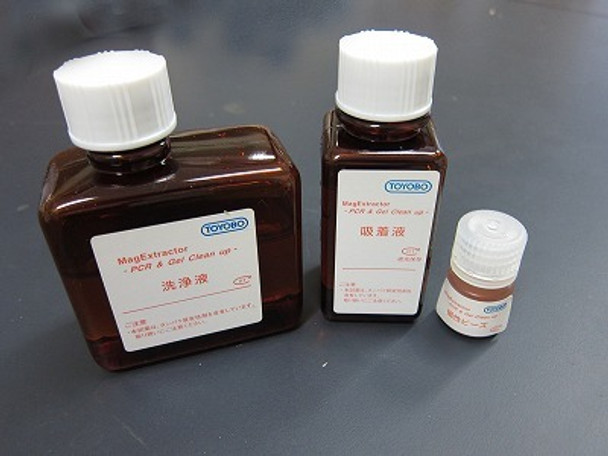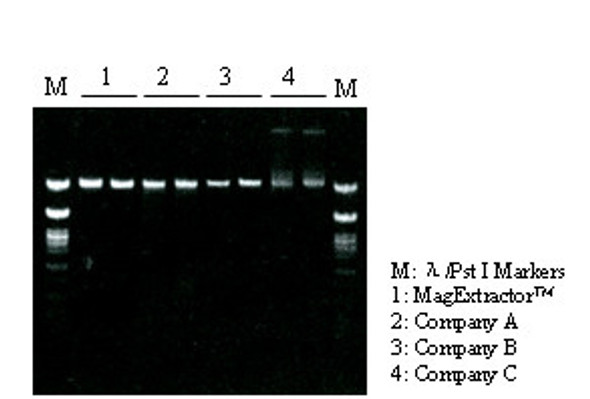Description
MagExtractor-PCR & Gel Clean Up is a magnetic silica bead-based kit for rapid, simple and reliable purification of DNA fragments from PCR reactions and gel extractions. Requiring a suitable magnetic separation stand like Magical Trapper (TYB-MGS-101), it exploits the property of silica surfaces to bind DNA in the presence of chaotropic agents (reference 1). Purified DNA can be used directly in a multitude of downstream applications.
Applications
- PCR fragment isolation
- DNA isolation from agarose gel blocks
- Desalination
- dNTP removal
- Primer removal
- Enzyme removal
Purified DNA can be used directly in:
- PCR reactions
- Sequencing reactions
- Labeling reactions
- Ligation reactions
- Enzymatic reactions
- Genetic transformation
- Hybridization
Features
- Recoverable DNA fragment size ranges from ~100 to 50,000bp. Fragments <40bp are mostly excluded.
- Maximum binding capacity is ~5ug DNA/30ul beads. However, we recommend using 2.5ug/30ul beads as a practical guideline.
- DNA purification is possible directly from various reaction solutions including but not limited to those for PCR, alkaline phosphatase and other enzymes.
- Recovery yield for ~100bp-50kbp-sized DNA fragments from ~100ul of reaction solution is 60-70%.
- Processing time for DNA fragment recovery is ~5 minutes from DNA solutions and <15 minutes from agarose gel blocks.
- Because agarose gel slices dissolve in the Binding Solution at room temperature, heat blocks are not required.
Kit contents (sufficient for 200 purifications)
- Binding Solution 88 ml (store at RT shielded from light)
- Magnetic Beads 8.5 ml (store at RT)
- Washing Solution 132 ml (store at RT)
Note: Exposure of the Binding or Washing solutions to low temperature may result in crystal precipitation. In this case, before use dissolve crystals by manual gentle end-over-end mixing. Also, as Binding and Washing solutions contain protein denaturant, exercise caution when handling and immediately rinse and clean off any solution that may get on the body.
References
- B. Vogelstein and D. Gillespie, Proc. Natl. Acad. Sci. USA. 76: 615-619 (1979)






